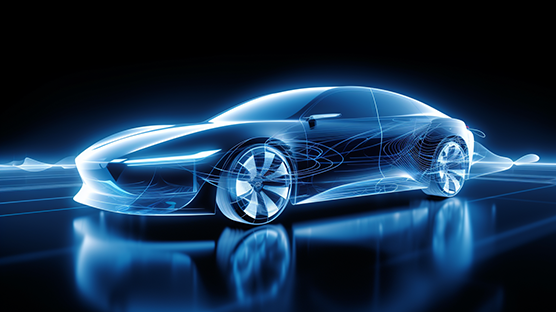An automotive signal acquisition PCB is a circuit board used to collect and process various sensor signals from vehicles. It is commonly used in automotive electronic control systems, on-board diagnostic systems (OBD), and automotive data recording and analysis fields. As an important automotive PCB, the signal acquisition PCB plays a critical role in in-vehicle systems, supporting real-time processing and transmission of various sensor signals.

Functions
1) Signal Acquisition: The automotive signal acquisition PCB can collect signals from various sensors in the vehicle, such as engine speed, vehicle speed, temperature, pressure, oxygen sensor signals, etc. As a core component of the automotive PCB, it ensures the stable collection and accurate transmission of these signals.
2) Signal Processing: In the automotive PCB, the signal acquisition PCB is responsible for processing the collected signals, such as filtering, amplification, and analog-to-digital conversion. These signal processing functions are crucial so that the collected data can provide an accurate basis for subsequent analysis and control.
3) Data Transmission: The processed signal is transmitted to the vehicle's control unit or external device via the CAN bus, LIN bus or other communication interfaces. Automotive signal acquisition PCBs typically integrate these communication interfaces, ensuring that signals are quickly delivered to relevant modules or devices.
4) Fault Diagnosis: Automotive signal acquisition PCBs also have fault diagnosis capabilities. By analyzing the collected signals, they can detect anomalies or faults in the vehicle systems and generate Diagnostic Trouble Codes (DTCs), which are essential for the stable operation of the automotive electronic control system.
Main Components
1) Sensor Interface: The automotive signal acquisition PCB is equipped with multiple interfaces to connect various automotive sensors, such as analog signal input, digital signal input, pulse signal input, etc., to ensure the diversity and efficiency of signal acquisition.
2) Signal Conditioning Circuit: To ensure signal accuracy and stability, the signal conditioning circuit in the automotive PCB is responsible for conditioning the sensor signals, such as filtering, amplification, and isolation.
3) Analog-to-Digital Converter (ADC): The automotive signal acquisition PCB converts analog signals into digital signals to support processing by the microprocessor. This functionality allows the automotive PCB to adapt to different types of sensors and signals.
4) Microprocessor/Microcontroller: As the core processing unit, the microprocessor/microcontroller in the automotive signal acquisition PCB handles signal processing, analysis, and control logic, making it crucial to the system's operation.
5) Communication Interfaces: Communication interfaces on automotive PCBs, such as CAN, LIN, K-Line, UART, and others allow the signal acquisition PCB to communicate efficiently with other electronic control units (ECUs) or with external devices in the vehicle.
6) Power Management: To ensure the stable operation of the signal acquisition PCB, the power management system in the automotive PCB provides stable power support, usually including voltage regulation circuits and overvoltage protection circuits
Application Scenarios
1) On-board Diagnostic System (OBD): Automotive signal acquisition PCBs are widely used in on-board diagnostic systems to read vehicle fault codes and real-time data, assisting maintenance personnel in diagnosing and servicing vehicle systems.
2) Engine Control Unit (ECU): Signal acquisition PCBs are used to collect various sensor signals from the engine, helping control fuel injection, ignition timing, etc., ensuring efficient engine operation.
3) In-vehicle Data Logger: With the support of automotive signal acquisition PCBs, in-vehicle data loggers can record vehicle operational data for accident analysis, driving behavior analysis, and other applications.
4) New Energy Vehicles: In electric or hybrid vehicles, automotive signal acquisition PCBs are used to collect signals such as battery status, motor speed, temperature, etc. to monitor the operating status of new energy vehicles.
Future Trends
1) Intelligence: As the automotive industry moves toward greater intelligence, automotive signal acquisition PCBs will integrate more AI algorithms to enable real-time data analysis and intelligent decision-making, further enhancing the intelligence of vehicle systems.
2) Vehicle-to-Everything (V2X): In the future, automotive signal acquisition PCB will be deeply integrated with vehicle-to-everything (V2X) technology to promote the interconnection between vehicles and vehicles, and vehicles and infrastructure, and improve driving safety and traffic efficiency.
3) High-Precision Sensors: With the continuous advancement of sensor technology, automotive signal acquisition PCB will support higher-precision signal acquisition and processing, providing more accurate data support for automotive electronic systems.
HoYoGo is an international, professional, and reliable automotive PCB manufacturer, equipped with high levels of automation and dedicated automotive production lines. Our automotive PCBs account for 49% of our production. Our production strictly follows the high quality system and has passed ISO9001, ISO14001, ISO13485 and TS16949 certifications. All products strictly follow the acceptance standards of IPC-A-600-H and IPC-6012. If you have related PCB needs, welcome to send us an inquiry.